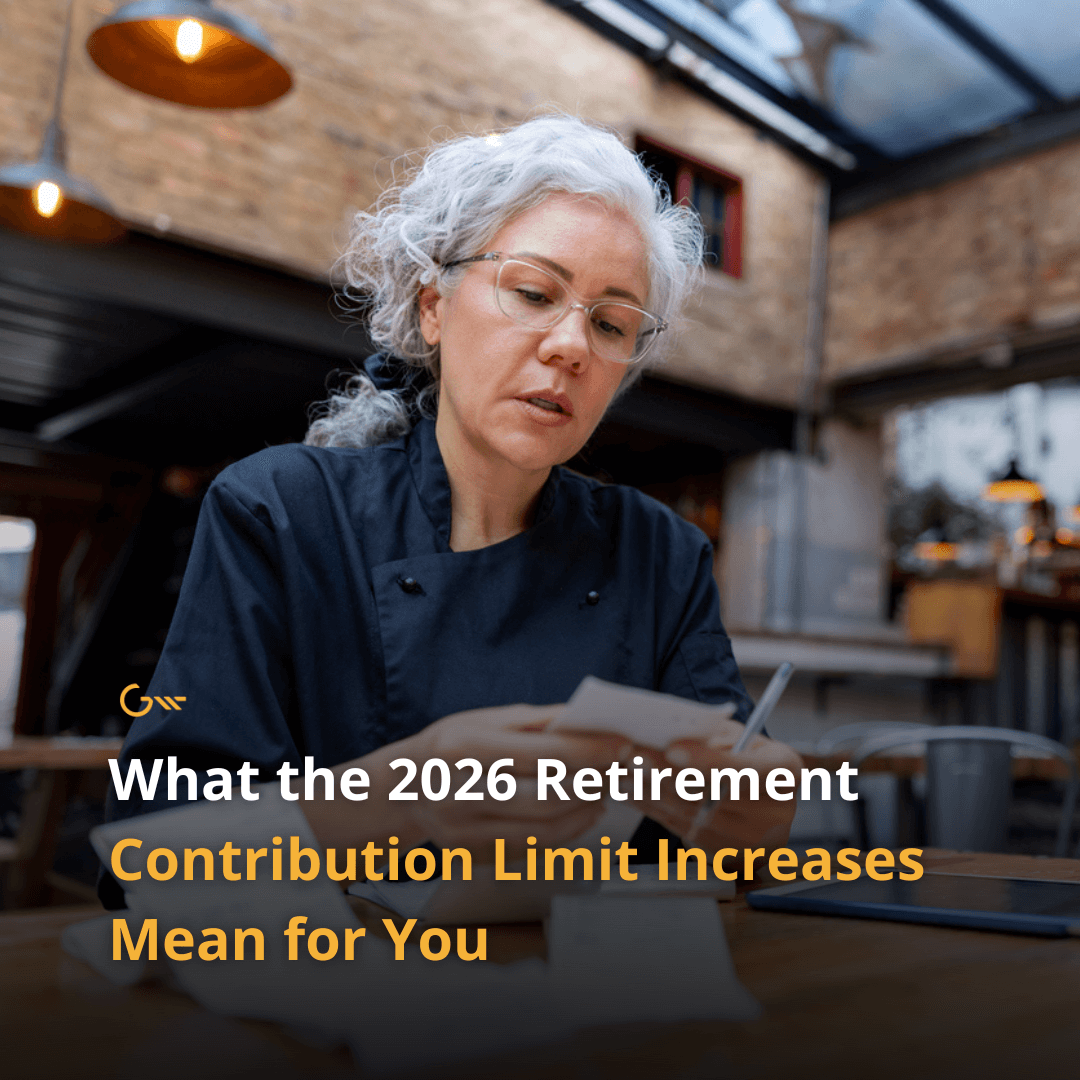Meet the Johnsons. For the past decade, they’ve diligently reviewed their investment portfolio each quarter, rebalanced their 401(k) annually, and maximized their tax strategies before year-end. Their income has grown significantly—they’re well into six figures now—but when was the last time they reviewed their insurance?
The answer: seven years ago, when they bought their current home.
In those seven years, they’ve added two teenage drivers to the household. Their business has tripled in value. They purchased a vacation property. Their oldest child is heading to college. And their aging parents have moved closer, raising questions about long-term care.
Yet their insurance—their financial safety net—hasn’t been touched.
Does this sound familiar?
“One must first insure against what can go wrong, in order to plan and invest for what can go right.”
This philosophy serves as the foundation for how we approach comprehensive financial planning at Gatewood. Yet insurance remains one of the most overlooked aspects of a financial strategy—whether you’re a high earner building wealth, a growing family navigating life’s transitions, or an established household managing complexity. As the year draws to a close, now is the ideal time to ask yourself: Is my insurance strategy aligned with my current life, my assets, and my goals?
Why Year-End Is the Right Time to Review
Life doesn’t stand still—and neither should your insurance. Whether you’re in your peak earning years, building your family, or managing established wealth, consider what’s changed in your world this year:
- Did your income increase significantly?
- Disability coverage that protected you five years ago may fall short today.
- Are you starting or growing your family?
- New children, changing childcare needs, or stay-at-home parent decisions all shift your insurance requirements.
- Did you acquire new assets?
- A second home, collectibles, or business interests all change your insurance needs.
- Did your family structure change?
- Marriage, divorce, births, or deaths require immediate beneficiary updates.
- Are you approaching retirement?
- The transition from accumulation to distribution changes everything—including your insurance strategy.
For growing families and high-earning professionals, insurance is about protecting what you’re building. For those with established wealth, it’s a strategic tool for preserving assets, managing risk, creating liquidity, and planning for transitions. And unlike your portfolio allocation or tax strategy, insurance gaps often go unnoticed until it’s too late.
The Questions You Should Be Asking Yourself
Instead of a generic checklist, let’s focus on the questions that reveal whether your insurance is truly working for you.
Life Insurance: Protection That Grows with You
- Does your coverage match your family’s needs today?
- Whether you’re protecting young children, replacing income, or creating estate liquidity, your coverage should reflect your current responsibilities.
- When was the last time you saw an in-force illustration?
- If you have permanent policies and it’s been more than two years, you may not know how they’re actually performing.
- Are your beneficiaries aligned with your current estate plan?
- Beyond outdated names, many couples miss a critical step when creating or amending trusts: naming the trust as the owner or beneficiary of the policy.
- Do you have cash value you’re not using?
- Permanent policies with significant cash value can be powerful tools for gifting, legacy planning, or even liquidity.
Disability Insurance: Protecting Your Greatest Asset
- Does your disability coverage reflect your actual income today?
- Many professionals outgrow early-career policies without realizing it—or find themselves underinsured as their income grows.
- If you’re a business owner, what happens to your overhead if you can’t work?
- Are you in your peak earning years?
- This is when disability protection matters most—and when gaps can be most costly.
Umbrella Liability: Your First Line of Defense
- Do you have umbrella coverage beyond your basic home and auto policies?
- Even for those early in wealth building, umbrella insurance is one of the most cost-effective protections you can buy.
- Has your net worth increased significantly?
- The umbrella coverage that seemed adequate five years ago may no longer be sufficient.
- Do you have teenage drivers in your household?
- This alone can increase your liability exposure substantially.
- Have you acquired rental properties or vacation homes?
- Are you more visible publicly or on social media?
- Increased visibility often means increased risk.
Long-Term Care: Planning for the Unexpected
- Do you have a plan—not just a policy—for future care needs?
- Have you explored hybrid life + long-term care structures?
- These can offer more flexibility and tax efficiency than traditional standalone policies.
- Does your long-term care strategy coordinate with your estate and cash flow planning?
Property & Casualty: The Details That Matter
- When did you last assess your home’s replacement cost?
- In many high-value markets, rebuilding costs have shifted dramatically.
- Are high-value items properly itemized?
- Jewelry, art, wine collections—standard policies often have sublimits that fall short.
- Did you acquire or sell property this year?
Business & Entity Coverage: Keeping Pace with Growth
- Are your buy-sell agreements current and properly funded?
- Does your key person insurance reflect today’s leadership and company valuation?
- This is especially critical if you’ve signed personal guarantees to secure bank lending—have you updated coverage for any new or increased lending needs?
- Have ownership structures changed in ways that trigger insurance updates?
The Most Common Gaps We See
After working with hundreds of families over the years, certain patterns emerge. These are the insurance gaps that appear most frequently:
- Outdated beneficiary designations that conflict with current estate plans, or missing trust designations when couples create or amend trusts
- Underinsured umbrella coverage leaving families exposed to personal lawsuit risk
- No liquidity plan for estate taxes forcing illiquid asset sales at inopportune times
- Unused cash value in permanent policies representing missed opportunities for gifting, legacy planning, or liquidity
- Incomplete long-term care planning that could burden family members or erode the portfolio in care scenarios
These aren’t just oversights—they’re vulnerabilities. And they’re often invisible until a crisis forces them into the light.
Insurance Works Best When It’s Integrated
Here’s what many people don’t realize: insurance isn’t a standalone strategy. It’s most effective when coordinated with:
- Estate documents and gifting strategy – ensuring beneficiary designations align with your broader wealth transfer plans
- Investment and cash flow planning – balancing premium outlays with other priorities
- Tax strategy – leveraging insurance for tax-efficient wealth transfer and estate planning
- Family and business transitions – protecting continuity during life’s key moments
Insurance should never be an afterthought. It’s a tool for activating and preserving wealth with purpose—ensuring you can plan and invest for what can go right, precisely because you’ve protected against what can go wrong.
Back to the Johnsons
After their year-end review, the Johnsons discovered several gaps: their umbrella coverage was inadequate with teenage drivers in the house. Their disability insurance hadn’t kept pace with significant income growth over the past five years. Their life insurance was far below what their young family would need if something happened. And their beneficiary designations hadn’t been updated since their estate plan was revised three years ago.
None of these issues were catastrophic—yet. But left unaddressed, any one of them could have derailed their financial plan during a time of crisis.
The good news? They caught them in time. And now they can move forward with confidence, knowing their protection is aligned with their goals.
Key Takeaways
- Insurance needs evolve as your life, assets, and goals change
- Year-end is the ideal window to review coverage, optimize premiums, and align policies with your broader financial strategy
- The most common gaps—outdated beneficiaries, underinsured liability, incomplete LTC planning—are often invisible until it’s too late
- Insurance works best when integrated with estate planning, tax strategy, and investment management
“One must first insure against what can go wrong, in order to plan and invest for what can go right.”
At Gatewood, we understand that wealth is more than a number—it’s what that number allows you to do. Our team works with you to help ensure your insurance strategy is aligned with your life, your values, and your vision for the future. Because the true value of planning isn’t just the strategy itself—it’s the confidence it creates.
Ready to review your insurance strategy?
Contact Gatewood Wealth Solutions to schedule your year-end insurance review.
Important Disclosures
Securities and advisory services are offered through LPL Financial, a registered investment advisor and broker-dealer (member FINRA/SIPC).
The opinions voiced in this material are for general information only and are not intended to provide specific advice or recommendations for any individual.
This material contains only general descriptions and is not a solicitation to sell any insurance product or security, nor is it intended as any financial or tax advice. Guarantees are based on the claims paying ability of the issuing company. If you need more information or would like personal advice you should consult an insurance professional. You may also visit your state’s insurance department for more information.





